Principles of Cover Cropping for Arid and Semi-arid Farming Systems
Guide A-150
John Idowu and Kulbhushan Grover
College of Agricultural, Consumer and Environmental Sciences, New Mexico State University
Authors: Respectively, Extension Agronomy Specialist and Assistant Professor, Department of Extension Plant Sciences, New Mexico State University. (Print friendly PDF)
Introduction
Cover crops are crops grown in between cash crop cycles, intercropped with cash crops, or planted in the absence of a normal crop (Reeves, 1994). They are grown to protect the land from soil erosion and loss of nutrients (Reeves, 1994) and to add organic matter to the soil, which can lead to increased soil microbial populations and diversity (Drinkwater et al., 1995). Cover cropping is an important component of sustainable agricultural systems because it helps build soil health and makes the soil more resilient to drought and other extreme environmental factors (Doran and Zeiss, 2000). This publication summarizes cover crop options along with benefits and challenges to their adoption in arid and semi-arid environments, including New Mexico.
Benefits of Cover Crops
Protecting the Soil from Water and Wind Erosion
Cover crops can provide surface protection for the soil (Pimentel and Kounang, 1998), especially during periods when the soil is not being used for a cash crop. This helps ensure that the soil is held in place against erosion that can often lead to a loss of small particles like clay and organic matter, which are very critical to soil fertility (Figure 1). Erosion in New Mexico is mostly caused by either by wind or water. Soil is more susceptible to wind erosion during strong winds that often occur in the spring, and this can lead to significant amounts of soil particles being blown away from the field. If a field has an established cover crop stand during this time, though, the soil will be protected from erosion. Heavy rainfall during the monsoon periods can also cause soil erosion. Having a ground cover will prevent water from washing away soils.
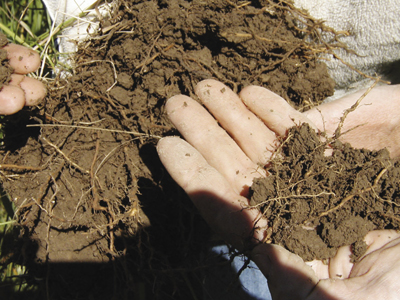
Figure 1. Roots holding and protecting the soil.
Adding Soil Organic Matter
Soil organic matter is very important for the overall health of any agricultural soil. When incorporated back into the soil, cover crops help to increase the soil organic matter, improving the soil’s biological activity, moisture retention, nutrient holding capacity, moisture infiltration, and tilth. These aspects are often limiting in soils of arid regions. Also, weeds, insect pests, and diseases can be suppressed within in the soil system by good organic matter management (Bailey and Lazarovits, 2003; Liebman and Davis, 2000).
Adding Nutrients to the Soil
When cover crops are incorporated into and decompose in the soil, valuable nutrients are released for crop use. Nutrients are released at different rates depending on the type of cover crop residue. Generally, cover crops with high carbon-to-nitrogen (C:N) ratios (>35:1) will decompose and release nutrients more slowly, while crops with low C:N ratios will rapidly decompose and release nutrients into the soil. For example, corn residue with a C:N ratio of 60:1 will decompose more slowly than a cowpea residue with a C:N ratio of about 20:1. It is therefore important to note that, for short-term nutrient supply through decomposition, cover crops that include legumes and legume mixtures are more likely to deliver nutrients faster because they decompose faster, especially when compared to cereals and grasses. The level of the crop’s maturity when it is incorporated into the soil will also affect the rate of decomposition; younger, immature crop residue will decompose and release nutrients faster than more matured crop residue with higher lignin content (Huntington et al., 1985).
Another way that cover crops can add nutrients to the soil is through nitrogen fixation in legumes. Legume crops can form symbiotic associations with a specialized class of bacteria called rhizobia (Kinkema et al., 2006). These bacteria live in the roots of legumes and consume simple sugars that the plants produce via photosynthesis. In return, the rhizobia bacteria produce nitrates from atmospheric nitrogen, which can then be used by the crop. Nitrate nitrogen is one of the nutrients used in the largest quantity by growing crops. Significant amounts of nitrogen can be fixed by the rhizobia bacteria, and the resulting nitrates are taken up by the associated legume plants. The nitrogen becomes available to the following cash crop after the legume cover crop has been terminated and incorporated into the soil.
Serving as a “Catch Crop”
When cover crops are grown after cash crops, they can prevent remaining soil nutrients—especially nitrogen—from being lost through leaching and other pathways (Thorup-Kristensen, 1994). In this sense, they are “catching” the nutrients that are left in the field at the end of the cash crop season. Deep-rooted cover crops are particularly good “catch crops” because they can extend their root networks into the soil profile and absorb nutrients that have gone beyond the reach of shallower-rooted cash crops. These nutrients are then made available to the following cash crop after the cover crops have been worked back into the soil.
Generally Improving Soil Health
Cover crops have significant impacts on many important soil processes and functions. Formation and stability of soil aggregates are improved by using cover crops (Liu et al., 2005). Other soil-related aspects affected by using cover crops include breaking up soil compaction (for more on managing soil compaction, see NMSU Extension Circular 672, Understanding and Managing Soil Compaction in Agricultural Fields [https://pubs.nmsu.edu/_circulars/CR672.pdf]), improving soil microbial diversity and activity, breaking disease and pest cycles, suppressing weeds through smother and allelopathic effects, and providing habitats for beneficial insects that can prey on field pests (Creamer and Baldwin, 2000). For example, Brassica crops have soil fumigating properties that can reduce nematode pressures in the soil (Potter et al., 1998). For information on soil health management, see NMSU Extension Guide A-148, Understanding Soil Health for Production Agriculture in New Mexico (https://pubs.nmsu.edu/_a/A148.pdf).
Challenges Facing Cover Cropping in Arid and Semi-Arid Environments
While cover cropping can deliver many positive on-farm benefits, farmers in dry regions, including New Mexico, face several challenges related to incorporating cover crops into their farming systems. Major challenges include which cover crop to select, cost and ease of establishment, and availability of water to raise cover crops. Growers are also concerned about the cost of seeds, tillage, irrigation, weed control, and termination of cover crops, especially in the current challenging economic climate. Many growers are reluctant to grow crops that may not be harvested and that will not deliver immediate economic benefit.
Another concern among dryland farmers, common in the eastern part of New Mexico, is the challenge of cover crop establishment under the recurrent droughts this region has been facing. There may not be enough rainfall in the preceding fall and winter seasons to guarantee the establishment and growth of summer cover crops in these semi-arid dryland areas. Additionally, farmers are also concerned that cover crops will extract too much water from the soil profile, thus limiting the water that will become available for the following cash crop. Research results have shown that the amount of water accumulated in the soil profile during the winter may affect the yield of the following cash crop in semi-arid dryland farming systems (Unger and Vigil, 1998). All of these concerns are important, and several research activities are currently addressing these issues, especially in dryland farming systems. One of the emerging innovative ways for cover cropping in semi-arid dryland systems is to combine no-till or minimum tillage with cover cropping. Reducing tillage intensity can help improve soil health, promote water infiltration, and reduce evaporative losses during the period that the cover crop is growing. Moisture utilization by the cover crops is counterbalanced by the improved infiltration and reduced evaporative losses that occur in no-till and minimum tillage systems (Unger and Vigil, 1998).
Considering Cover Crops
While cover crops can deliver many benefits within cropping systems, using them may not always be easy. There are many barriers that growers face when contemplating the utility of cover crops, especially in arid and semi-arid regions. To successfully practice cover cropping, it is important to address the following issues.
| a. | What is the goal for cover cropping? There are many possible goals that you can set before selecting a cover crop, including building up soil organic matter, managing soil nitrogen, protecting soil from erosion, or suppressing insect pests, diseases, and/or weeds. Setting a goal can significantly affect the cover crop that you select. For example, if you are more interested in organic matter management, it will be better to select a crop that produces a high biomass (tall and/or dense growth) rather than crops with low biomass (low or open growth). |
| b. | Soil type and properties. It is important to know your soil type—including its physical properties and inherent abilities and limitations—before you can select an appropriate cover crop. Questions to consider include: Is it a heavy soil or a sandy soil, or in between? How do crops typically respond to fertilizers on the soil? Do I have salinity problems? What is the drainage condition of the soil? Are there other soil limitations like a hard pan? |
| c. | Crop rotation. Your rotation will also determine which cover crops will fit into your cropping system. If you grow a winter cash crop, then summer cover crops may fit better into your rotation, whereas if the cash crop is grown in summer, a winter cover crop will be more suitable. Also consider whether there is a fallow period in between crops (e.g., dryland sorghum–fallow–wheat rotations), as well as what chemicals (e.g., herbicides) have previously been used for the cash crop that might negatively affect the cover crop. |
| d. | Suitability for utilization/frequency of harvest. In some situations, you may wish to use the cover crop for marketable income or on-farm needs. A forage crop (such as sorghum–sudan) is an example of this, in which the first growth cycle or cutting is used for forage or income and the last growth cycle is worked back into the soil as a cover crop. In the case of perennial systems such as alfalfa, the last cut before the alfalfa field is terminated is incorporated into the soil as the cover crop. |
| e. | Soil preparation and other cultural practices. It is important to know the soil preparation needs of the cover crop for proper establishment. For example, some small-seeded cover crops may be challenging to establish in heavy soils and/or heavy residues (e.g., no-till). It is also important to understand the growth pattern of cover crops and how to effectively terminate them. A crucial aspect is to know when cover crops go into the seeding stage. It is advisable to terminate cover crops before they set seed; otherwise, they may become weeds and affect the growth of subsequent cash crops. |
| f. | Irrigation and water availability. In arid and semi-arid regions such as New Mexico, water availability is very crucial for crop production. Farmers need to assess how much water is available for growing cover crops and when water is most available in the system (e.g., irrigation supply or monsoonal rains). Crop production should be planned such that the amount of water used to raise cover crops will not cut into the water needed to raise the cash crops. It is more desirable to choose drought-tolerant cover crops in situations with limited water availability. |
Cover Crop Options
There are many cover crops that can grow very well in New Mexico. However, as discussed previously, choosing a cover crop that fits your particular farming situation depends on several factors. Generally, cover crops can be grouped into different categories based on the time they are planted and some special functions that they perform.
Warm-Season Cover Crops (Summer Cover Crops)
Warm-season cover crops are planted in spring/summer to prevent erosion, improve soil health, and/or add nitrogen to the soil. Soil improvements are then available for the winter cash crop that follows the summer cover crop. Warm-season cover crops also provide the opportunity to practice crop rotations, which may be essential to overcome diseases and pest problems on the farm. Many species can be used for this purpose, including several grasses, legumes, and broadleaf crops (Figures 2 and 3). Some adaptable summer cover crops are presented in Table 1.
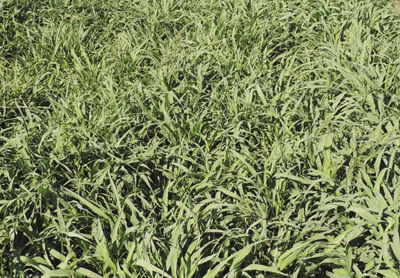
Figure 2. Pearl millet cover crop (a summer annual).

Figure 3. Sesbania cover crop (a summer annual).
Cold-Season Cover Crops (Winter Cover Crops)
Winter cover crops are often planted in the fall before temperatures get too cold for crops to establish. Winter cover crops provide ground cover during late fall, winter, and early spring. Winter covers can be very beneficial to cropping systems that depend mainly on summer cash cropping. In New Mexico, wind erosion is very common during the early spring season, and having a winter cover crop in place during this time can help protect the soil surface and reduce the negative impacts of wind erosion on soil quality. Crops that are selected as winter covers must be cold-tolerant. There are several cool-season grasses (wheat, rye, oats, and barley) and legumes (clovers, vetches, and field peas) that are adaptable to the Southwest (Figure 4). When using winter covers, attention must be paid to how early or how late in the season a cover crop is planted. Planting too late may limit the amount of biomass that the cover crop produces. Selected winter cover crops for the Southwest are given in Table 1.
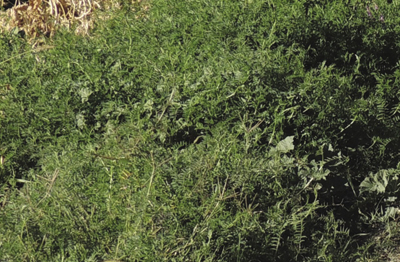
Figure 4. Hairy vetch cover crop (winter annual).
Table 1. Selected Cover Crops and Their Characteristics
| Name | Type | Growth characteristics | Other notable characteristics | Seeding rate (in pounds per acre for a single-species planting) |
| Alfalfa | Perennial | Cold-tolerant, nitrogen-fixing legume. | Low shade tolerance, deep-rooted, drought-tolerant. | 15–18 |
| Annual grasses (wheat, barley, oats, annual ryegrass, cereal rye, triticale) | Winter annual | Cold-tolerant, rapid growth rate, inexpensive seed. | High lime tolerance, low drought and generally low salinity tolerance (barley is salt-tolerant), moderate moisture use. | Wheat, barley, oats, triticale: 60–120 Annual ryegrass: 15–30 |
| Austrian winter pea | Winter annual | Moderately cold- and drought-tolerant, nitrogen-fixing legume. | Can provide high biomass, moisture-efficient, can suppress weeds due to rapid growth in spring, low shade and traffic tolerance. | 60–80 |
| Brassicas (mustards, turnips, forage radish) | Winter annual | Tap-rooted, some are moderately cold-tolerant, can be seeded in fall. | Mustard can act as a bio-fumigant, radish and turnip can break soil compaction, low to high salinity tolerance depending on species, moderate to high drought tolerance. | Mustard: 5–12 Turnip: 4–7 Radish: 8–12 |
| Buckwheat | Summer annual | Cold-sensitive, rapid establishment and growth. | Moderate drought and shade tolerance, can suppress weeds, can do well in relatively poor soils, good for soil aggregation, can reseed if flowers mature. | 50–60, drilled |
| Cowpea | Summer annual | Cold-sensitive, nitrogen-fixing legume. | Drought-tolerant, can do well in relatively poor soils and can fix up to 150 lb N per acre. | 50–100 |
| Foxtail millet | Summer annual | Short growing season, cold-sensitive. | Drought-tolerant, grows fast with adequate moisture. | 15–20 |
| Hairy vetch | Winter annual | Cold-tolerant, nitrogen-fixing legume. | Moderate tolerance to shade, drought, and soil lime; low salinity tolerance. | 15–20 |
| Lablab | Summer annual | Vining and spreading legume. ‘Rio Verde’ lablab (developed by Texas A&M) also has high nutritive value as forage. | Provides very good soil cover that can suppress weeds, good nitrogen fixation. | 50–60 |
| Pearl millet | Summer annual | Cold-sensitive, deep-rooted, fast-growing grass. | Drought-tolerant, provides good soil cover that can suppress weeds, requires less nutrients and water than sorghum–sudangrass. | 15–20 |
| Red clover | Perennial | Short-lived, cold-tolerant, nitrogen-fixing legume. | Moderate tolerance to soil lime, low drought and salinity tolerance, intolerant to shade. | 20–28 |
| Sesbania | Summer annual | Erect legume with good nitrogen fixation, can establish well in weedy fields. | Grows very fast and attains up to 5 ft in height in about 2 months, great biomass and good nitrogen fixing potential. | 30–40 |
| Sorghum–sudangrass | Summer annual | Cold-sensitive, fast-growing annual grass with good root system. | Drought-tolerant, can suppress weeds, large amounts of biomass possible, water- and nutrient-use efficient. | 15–40 |
| Yellow sweetclover | Annual, biennial, or short-lived perennial | Cold-tolerant, nitrogen-fixing legume with strong tap roots. | High tolerance to drought, salinity, and soil lime; intolerant to shade. | 8–15 |
Living Mulches
Living mulches are cover crops that are planted and grown at the same time as the cash crop. Most of the time, the living mulch occupies the lower canopy while the cash crop occupies the upper canopy. To select appropriate cover that can serve as a live mulch, a good understanding of the growth habits of both the cash and the cover crop is essential. Not all cover crops can serve as living mulch. Some cover crops have very aggressive growth habits that will compete with cash crops for nutrients and water, and these should not be selected as living mulch. Many low-growing species, such as perennial clovers, can serve as living mulches (Figure 5).
Living mulches do not compete too strongly with the cash crop for nutrients; in addition, cover crop biomass that falls on the ground, such as dead leaves and foliage, can contribute to the nutrient and organic matter supply of the soil. Living mulches can help protect the soil from erosion, provide soil fertility, conserve soil moisture, and help suppress weeds and diseases.
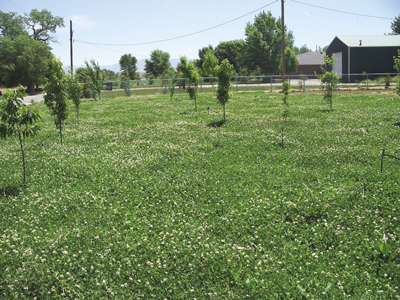
Figure 5. New Zealand white clover as a living mulch in an orchard.
Important Cautions
Seed Cost
Some cover crop seeds may be very expensive, and seed availability tends to vary from region to region. Consider both the costs and availability of any intended cover crop before making a final choice. In many cases, different cover crops can fulfill your intended goal(s), giving you an opportunity for choice. The first step is to contact local seed vendors to find out which cover crop seeds are available. To avoid expensive shipping costs, select locally available cover crop seeds when possible. Ask the vendor specific questions about the growth habits of the cover crop variety you want to purchase. Significant varietal differences may exist within the same type of cover crop.
Terminating Cover Crops
Understanding the growth patterns and habits of cover crops is essential to maximize their benefits. Wrong management can lead to problems on the farm. Terminating cover crops at the appropriate time is also key to success. When cover crops go into the seeding stage, they can become weeds on the farm for many years and compete with cash crops. The best time to terminate a cover crop is often before the seeding stage or at flowering.
There are several ways to terminate a cover crop. The most common way is by working them into the soil. Other methods include herbicides, mowing and leaving on the surface (for covers without regrowth potential), and using a roller–crimper (Figure 6).
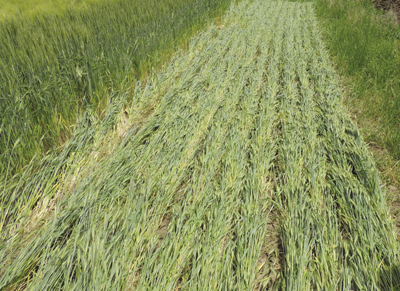
Figure 6. Terminating a winter cereal cover crop with a roller–crimper.
Nutrient Supply Value
If you intend to use legumes for nitrogen management, it is important to select species that can fix considerable amounts of nitrogen in the soil. In some cases, it may be necessary to inoculate the legume seeds with appropriate rhizobia before planting. Legumes that have shown long-term adaptability to an area will likely have more native soil rhizobia that can fix nitrogen. Observing the roots of legumes for active nodules during growth of the cover crop will help determine if nitrogen fixation is taking place.
Cover Crops May Harbor Diseases, Pests,
or Nematodes
Farmers need to watch out for cover crops that can serve as hosts to certain pests and soilborne pathogens that may affect the subsequent cash crop. For example, Dillard and Grogan (1985) found that disease incidence in lettuce was very high in plots previously planted to vetch in furrow- or sprinkler-irrigated fields in California. Leguminous cover crops like lablab and hairy vetch have also been shown to be hosts to plant-parasitic nematodes, and such cover crops should be avoided in soils and cropping systems that have historical nematode issues.
COVER CROP MIXTURES
Mixing different species of cover crops is becoming more popular with many growers. There are several advantages to mixing cover crop species rather than using a single crop.
- Using species from different families can enhance soil health; for example, a mixture of grasses and legumes can provide a high biomass from grasses, nitrogen additions from the legumes, and a faster decomposition of crop residues.
- Mixtures of cover crops can tolerate a wide range of soil conditions.
- Mixtures of cover crops can provide better weed suppression.
Choosing compatible cover crops and adjusting the seeding rates of the different species is very critical for successful mixed cover cropping. If one of the cover crops in the mixture grows too aggressively, it may smother other less-dominant crops, negating the benefits of such mixtures.
CONCLUSION
Cover crops can be important tools for sustainable cropping in arid and semi-arid regions, including New Mexico. Using appropriate cover crops can prevent or reduce soil erosion and enhance soil health. However, recurrent droughts and water availability can pose serious challenges to the successful implementation of any cover cropping system. Choosing the right cover crops and managing them appropriately can provide long-term benefits for many agricultural fields. Growers wishing to begin cover cropping can contact their county Cooperative Extension agents to find out more about which cover crop options are most suitable for their region (https://aces.nmsu.edu/county/).
REFERENCES
Bailey, K.L., and G. Lazarovits. 2003. Suppressing soil-borne diseases with residue management and organic amendments. Soil and Tillage Research, 72, 169–180.
Creamer, N.G., and K.R. Baldwin. 2000. An evaluation of summer cover crops for use in vegetable production systems in North Carolina. HortScience, 35, 600–603.
Dillard, H.R., and R.G. Grogan. 1985. Influence of green manure crops and lettuce on sclerotial populations of Sclerotinia minor. Plant Disease, 69, 579–582.
Doran, J.W., and M.R. Zeiss. 2000. Soil health and sustainability: Managing the biotic component of soil quality. Applied Soil Ecology, 15, 3–11.
Drinkwater, L.E., D.K. Letourneau, F. Workneh, A.H.C. Van Bruggen, and C. Shennan. 1995. Fundamental differences between conventional and organic tomato agroecosystems in California. Ecological Applications, 5, 1098–1112.
Huntington, T.G., J.H. Grove, and W.W. Frye. 1985. Release and recovery of nitrogen from winter annual cover crops in no‐till corn production. Communications in Soil Science & Plant Analysis, 16, 193–211.
Kinkema, M., P.T. Scott, and P.M. Gresshoff. 2006. Legume nodulation: Successful symbiosis through short- and long-distance signaling. Functional Plant Biology, 33, 707–721.
Liebman, M., and A.S. Davis. 2000. Integration of soil, crop and weed management in low-external-input farming systems. Weed Research, 40, 27–48.
Liu, A., B.L. Ma, and A.A. Bomke. 2005. Effects of cover crops on soil aggregate stability, total organic carbon, and polysaccharides. Soil Science Society of America Journal, 69, 2041–2048.
Pimentel, D., and N. Kounang. 1998. Ecology of soil erosion in ecosystems. Ecosystems, 1, 416–426.
Potter, M.J., K. Davies, and A.J. Rathjen. 1998. Suppressive impact of glucosinolates in Brassica vegetative tissues on root lesion nematode Pratylenchus neglectus. Journal of Chemical Ecology, 24, 67–80.
Reeves, D.W. 1994. Cover crops and rotations. In J.L. Hatfield and B.A. Steward (Eds.), Advances in Soil Science: Crops Residue Management (pp. 125–172). Boca Raton, FL: CRC Press, Inc.
Thorup-Kristensen, K. 1994. The effect of nitrogen catch crop species on the nitrogen nutrition of succeeding crops. Fertilizer Research, 37, 227–234.
Unger, P.W., and M.F. Vigil. 1998. Cover crop effects on soil water relationships. Journal of Soil and Water Conservation, 53, 200–207.
For more on this topic, see the following publications:
A-148: Understanding Soil Health for Production Agriculture in New Mexico
https://pubs.nmsu.edu/_a/A148/
A-146: Appropriate Analyses for New Mexico Soils
https://pubs.nmsu.edu/_a/A146/
All Agronomy Publications:
https://pubs.nmsu.edu/_a/

John Idowu is an Extension Agronomist in the Department of Extension Plant Sciences at NMSU. He earned his master's in agronomy from the University of Gottingen in Germany and his Ph.D. in land management from Cranfield University in the UK. His research and Extension activities are focused on sustainable crop production and soil management in New Mexico.
To find more resources for your business, home, or family, visit the College of Agricultural, Consumer and Environmental Sciences on the World Wide Web at pubs.nmsu.edu
Contents of publications may be freely reproduced for educational purposes. All other rights reserved. For permission to use publications for other purposes, contact pubs@nmsu.edu or the authors listed on the publication.
New Mexico State University is an equal opportunity/affirmative action employer and educator. NMSU and the U.S. Department of Agriculture cooperating.
December 2014


